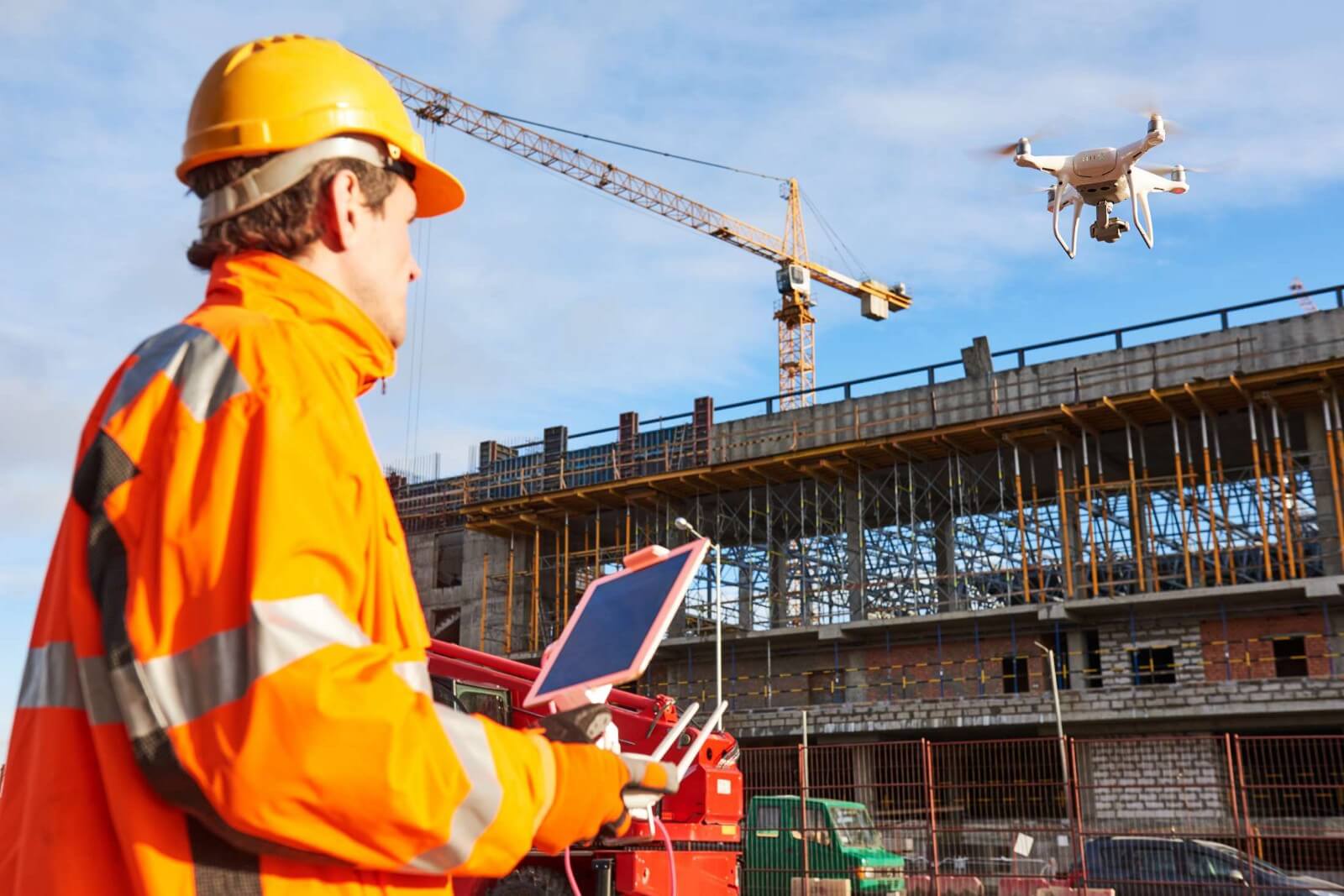Drones in Construction
The Vanguard, is Airborne Drones most popular UAV, which is a long range surveillance drone with a configurable Data Link video Range and flight times. The Vanguard drone system is their solution to security and surveillance needs.
It is also ideal for inspection and detection where fine detail such as cracks and signs of wear are needed. The Vanguard has a dual camera configuration which gives you the ability to see what the Vanguard sees in real time and allows you to interchange between the two cameras while in flight. The Thermal camera allows you to detect objects, which you can then zoom in on when switching to the the 10x Optical Zoom camera. And with a first-of-its-kind dual antenna station, the Vanguard provides the clearest image even when it has been pushed to its limits!
On an Exclusive interview, Construction Review Magazine had a chat with Airborne Drones highlighting the new adopted UAV technology in Africa’s construction sites
(https://constructionreviewonline.com/2018/07/the-new-construction-site-boss-adopting-uav-technology-in-africa/)
1.How does Airborne Drone see the African drones in construction market?
Firstly, Africa is known as a continent of large open spaces consisting mainly of developing economies. Unlike built up societies like the UK, where the security of the public is of a major concern, African countries have much more freedom in adopting, and benefiting from, UAV technologies (Drones).It also follows that construction sites are often situated in remote locations.
Secondly, at the same time the developing nature of African economies means infrastructure development projects enjoy a higher priority. Frequently these infrastructure capital projects are funded by foreign entities in a BOT (Build, Operate and Transfer) engagement model, which requires skills and technology transfer to local resources before the responsibility for large Operational Plants are taken over by local authorities/companies. During the build and operating phases of these projects, foreign funders typically have an interest in monitoring progress of their investments from afar. Enter the construction drone.
“The new construction site boss”
For both of the above reasons construction site monitoring and remote site monitoring becomes important and can be much improved with the deployment of drones. Example: Drones have literally become the new boss on the construction site. Once per day, several drones automatically patrol the work site, collecting video footage.
These images and meta-data are then converted into a three-dimensional picture of the site, which is fed into software that compares it to computerized architectural plans as well as a the construction work plan showing when each element should be finished.
The software can show managers how the project is progressing, and can automatically highlight parts that may be falling behind schedule. The collection of sensing data can show, for example, that a particular structural element is behind schedule, perhaps because materials have not yet arrived. Productivity and efficacy of onsite labour can also be monitored remotely.
2.Which are the most popular drone technologies being applied in Africa currently?
The technologies most popular to collect different types of data during the construction process are:
- For 2D Mapping: Visual, Orthomosaic
- For 3D Data: LiDAR
- For Raw Imagery: Aerial, Thermal
To get maximum advantage of these powerful technologies drone operators strive to maximize the return on each flight mission. To achieve this they select UAV platforms with highest payload capacities, longest distance communication ranges and high-endurance.
The most successful UAV platforms are those who are able to interface with back-end data management processes. This is where integration with business processes really happens.
Recently some of these cloud-based data processing service providers, have been making rapid progress with developing improved solutions for the retail drones, where connectivity is not an issue from software to air frame.
The good news is that the commercial UAV market is now able to integrate the UAVs to point were they are now able to scale these shrink wrapped solutions up into the long range and endurance systems that are capable of 1 to 56 hour mission drone markets. With introduction of AI and uploading data into the cloud, customers can access, and respond to, actionable insights in real-time.
This removes the protracted post-processing of data that characterized the past. The setting up of missions is increasingly automated and simplified reducing the need for any specialist’ intervention. As the UAVs will be able to connect to cloud themselves, soon the only mission tasks left for drone operator will be to set up and maintain the UAV. Right now the next generation of UAV operators will fulfill same roles as car mechanics once did.
Surveyors themselves, and certifications they carry to operate in the surveying space, will eventually become more geared the software market and drone operators will receive certificates allowing them to operate UAVs on behalf of surveying agencies.
At the moment it is not clear if UAV operators will even be allowed to fly AUVs on behalf of professional surveyors. This will become more easily managed if surveys formed part of software environment rather than being operated from the field. The skilled labour force that once was on site will move to office to approve surveying that will be done via AI and UAVS.
3. What are the challenges in the African market in terms of application and maintenance?
Most African countries are in the same situation when procuring complex new technologies which frequently are sourced remotely from abroad from countries with high input costs and from companies with high overheads along with very unfavorable exchange rates, making them very costly.More importantly, the long distance nature of the maintenance and support relations has been a painful experience for many African countries.
Other challenges to overcome is that out of 54 African Countries, 4 do not allow drones, 15 do have regulations that enable the use of Drones for Commercial use, and 35 countries do not have any apparent regulations.
However, fortunately Africa falls within Region 1 of the ITU (International Telecommunications Union) which adopts the 900Mhz frequency for unlicensed ISM (Industrial, Scientific, Medical) use. This is very conducive to the beneficial adoption of drones in Africa as this allows for much further data connectivity ranges for flight missions.
The unpredictable nature of looming trade wars provides further uncertainty when sourcing from affected countries.
4. What do you think can be done to overcome these challenges?
Ideally being able to source the same leading edge technologies locally from manufacturers on the African Continent with a strong re seller network and an understanding of local cultures. At the same time such manufacturers would also be able to benefit from lower input costs and also with similar exchange rate ranges.
5. How is the future of drones in construction in Africa looking?
“Building Smart Infrastructure, Smartly”
Africa is an ideal location for the adoption of drones (many overseas concept projects are conducted in Africa) given the amount of physical space, the developmental nature of local economies and the natural entrepreneurial nature of Africans.
The lack of infrastructure in Africa provides Africa with the unique opportunity to leapfrog the infrastructure development phases that first world countries have had to go through. Because Africa is not bound by legacy infrastructure that has to be upgraded. In other words Africa can start by developing “Smart” Infrastructures (“smart” buildings, “smart” cities, etc) rather than the slow, expensive process of ‘smartening’ old infrastructure. This is similar to what Africa has done with the adoption of cellular telecommunications rather than fixed line infrastructure.
This means there is the opportunity, not only to build smartly, using technologies like drones, but also to build smart infrastructure, that can benefit from smart infrastructure elements such as IOT (Internet of Things), Digital Twinning, AI,etc but also for the ongoing use of Drones.
Airborne Drones is a Cape Town based UAV manufacturer which provides customized long range, high endurance UAV solutions to a variety of commercial clients internationally.










